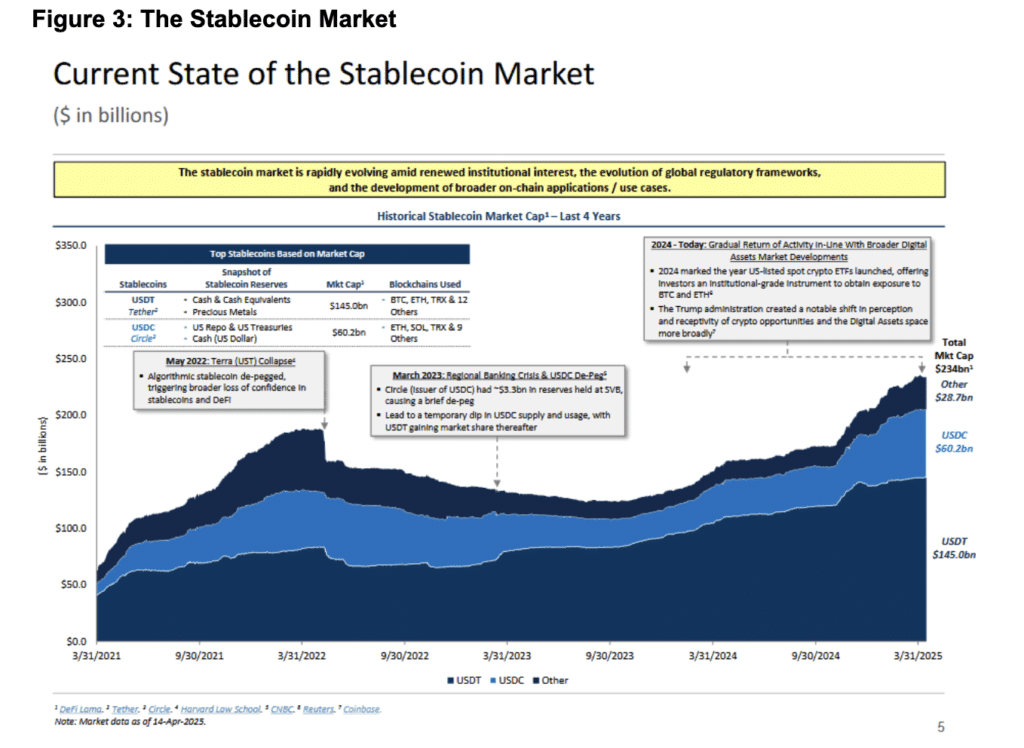American politicians disagree over stablecoins because they may become the tool for deregulating the Fed and for enabling “free banking.”
Since 2024, the U.S. Congress has embraced digital currencies…
In January 2024, the U.S. Congress approved that the Securities and Exchange Commission (SEC) may authorize ETFs that invest exclusively in cryptocurrencies. At the time, the congressional debate was marked by considerable skepticism, including from JPMorgan CEO Jamie Dimon. The skepticism was partly a result of the spectacular collapse of FTX (e.g. Sam Bankman-Fried) in November 2022.
Since then, the Federal Reserve’s digital currency project (CBDC) has made significant progress. In addition, major banks and credit card companies have developed infrastructures that have yielded surprisingly positive results in terms of efficiency, as discussed in the previous blog post.
Equally important, both Trump and the MAGA base have come to embrace the advantages of digital currencies. For example, Trump has launched his own cryptocurrency, $Trump. More importantly, however, “Project 2025” views digital currencies as a key path to liberalizing the financial sector, including currency issuance. Stablecoins are the first step on that path.
… and the Expectations for 2025 and Beyond Are Enormous
In February 2025, Republican Senator Bill Hagerty introduced the Genius Act bill. The bill aims to establish a federal regulatory framework for stablecoins and their issuers.
According to the proposal, stablecoins may only be issued by FDIC-insured banks, their subsidiaries, or OCC-approved issuers. Stablecoins must always be fully backed 1:1 by USD or by safe, liquid assets. The bill is specific down to the detail that Treasury bonds may have a maximum weighted average maturity of 93 days. In addition, no leverage is permitted, and regular audits and monthly independent certification of the reserves are required.
According to the TBAC report (see previous blog post), the total market value of stablecoins currently stands at USD 234 billion. TBAC expects that figure to grow tenfold to over USD 2 trillion by 2028. Of this amount, more than USD 1 trillion is expected to be backed by Treasury bonds. This would mean that stablecoin issuers collectively would own more U.S. government debt than, for example, the UK (currently USD 779 billion) and China (currently USD 765 billion). Only Japan would hold more, at present USD 1.13 trillion. In short, stablecoins are on track to become a very big deal.

But There Is Deep Disagreement About the Long-Term Implications
The Trump administration wants to accelerate the development—primarily because Project 2025 and Trump aim to deregulate the financial sector.
- As part of that effort, they want to dissolve most of the Securities and Exchange Commission
- Trump has also already rolled back parts of the CFTC’s oversight of cryptocurrencies
- Finally, they aim to dismantle the Federal Reserve in favor of a "free banking" system
- Free banking" essentially means that invisible market forces (banks and others) should ensure natural equilibrium without government oversight. Digital currencies are the central tool for executing this transition.
In principle, both Democrats and Republicans agree on the importance of digitizing the U.S. dollar. They are also broadly aligned on many of the security requirements in the Genius Act for stablecoin issuers. But beyond that, the consensus breaks down. Democrats believe it should happen under the auspices and supervision of the Federal Reserve, while Republicans see the law as merely a stepping stone toward "free banking".
Senator Elizabeth Warren is particularly concerned that the Genius Act could lead to a system with no oversight, i.e., without basic safeguards. That would put overall financial stability at risk. Additionally, Democrats worry that the Genius Act will primarily serve to increase Trump’s personal wealth at the expense of the broader public.
The Implications Are Vast and Profound
Congress’s decision on the Genius Act may thus mark a pivotal turning point for Project 2025’s ambition of a libertarian and deregulated United States.
It is, however, important to remember that Project 2025 still aims to maintain U.S. global influence. The U.S. wants to continue controlling the global digital and monetary infrastructure. Only through that can it preserve the U.S.’s exorbitant privilege as the issuer of the world’s dominant reserve and settlement currency.
But by transitioning to stablecoins under a free banking paradigm, regulation would shift from the Fed (and the state) to private financial institutions. That would effectively halt the Fed’s CBDC project and mark a decisive step toward rendering the Fed obsolete.
This would open up an entirely new playing field of risks. Is anyone truly prepared for that? The financial stability of the United States affects the entire world.


